 Libri di Mieke Bal su Unilibro.it) Libri di Mieke Bal su Unilibro.it)
|
|
2024 |
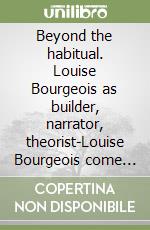 Title :
Beyond the habitual. Louise Bourgeois as builder, narrator, theorist-Louise Bourgeois come costruttrice, narratrice, teorica
Title :
Beyond the habitual. Louise Bourgeois as builder, narrator, theorist-Louise Bourgeois come costruttrice, narratrice, teoricaAuthor: Bal Mieke Publisher: Postmedia Books € 16,90
Scontato: € 16,06
|
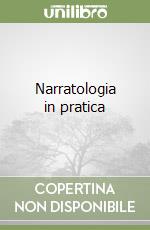 Title :
Narratologia in pratica
Title :
Narratologia in praticaAuthor: Bal Mieke Publisher: Postmedia Books € 24,00
Scontato: € 22,80
|
|
1918 |
 Title :
Nalini Malani
Title :
Nalini MalaniAuthor: Malani Nalini (CON), Beccaria Marcella (EDT), Beccaria Marcella, Pijnappel Johan, Bal Mieke Publisher: Baker & Taylor € 50,80
|
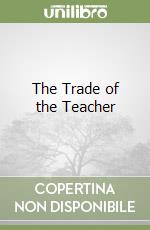 Title :
The Trade of the Teacher
Title :
The Trade of the TeacherAuthor: Lutters Jeroen, Bal Mieke (EDT) Publisher: Valiz € 22,30
|
|
1917 |
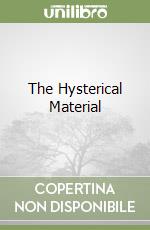 Title :
The Hysterical Material
Title :
The Hysterical MaterialAuthor: Bal Mieke (EDT), Chari Anita (EDT), Mukherjee Ankhi (EDT), Oppenheimer Geof (EDT) Publisher: Soberscove Pr € 23,70
|
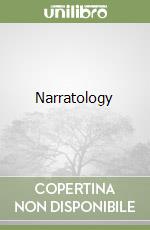 Title :
Narratology
Title :
NarratologyAuthor: Bal Mieke Publisher: Univ of Toronto Pr € 26,30
|
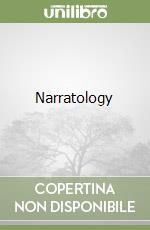 Title :
Narratology
Title :
NarratologyAuthor: Bal Mieke Publisher: Univ of Toronto Pr € 59,80
|
 Title :
Emma & Edvard Looking Sideways
Title :
Emma & Edvard Looking SidewaysAuthor: Bal Mieke Publisher: Mercatorfonds € 71,50
|
||
|
1916 |
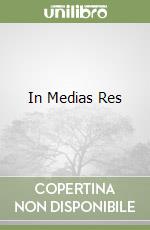 Title :
In Medias Res
Title :
In Medias ResAuthor: Bal Mieke Publisher: Baker & Taylor € 65,50
|
 Title :
On Stage
Title :
On StageAuthor: Roman Mathilde, Penwarden Charles (TRN), Bal Mieke (FRW) Publisher: Intellect L & D E F A E € 38,30
|
|
1914 |
 Title :
Trine Søndergaard
Title :
Trine SøndergaardAuthor: Søndergaard Trine (PHT), Bal Mieke Publisher: Hatje Cantz Pub € 59,50
|
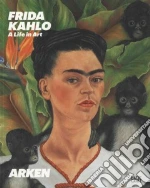 Title :
Frida Kahlo
Title :
Frida KahloAuthor: Kahlo Frida (ART), Hoholt Stine, Pollock Griselda, Matute Laura Gonzales, Bal Mieke Publisher: Hatje Cantz Pub € 28,00
|
|
1913 |
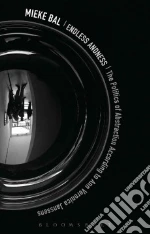 Title :
Endless Andness
Title :
Endless AndnessAuthor: Bal Mieke Publisher: Bloomsbury USA Academic In Endless Andness, Mieke Bal pioneers a new understanding of the political potential of abstract art which does not passively yield its meaning to the viewer but creates it anew - an art perceived not only through the retina but experienced viscerally. In this book, the third of her companion volumes on art's political agency, Bal explores perception through an intense engagement with the work of Belgian sculptor Ann Veronica Janssens. In a series of vividly-recalled encounters with Janssen's practice over a number of years, Balpresents a new conception of embodied perception - art experienced in a body conjured into participation and transformed by the experience. From Janssens' 'mist room' works and the CorpsNoir sculptures through to the fugitive, porous Aerogel, Bal traces an art which eludes the subject-object distinction to alter our ideas about the potential of political art in abstract and figurative forms. Enticing us simultaneously to lose ourselves and to come home, the tenuous materiality of installation art empowers those who live in the permanently lost and migratoryc ondition that characterizes contemporary experience. In celebrating and interrogating the work of this prolific and innovative artist, Mieke Baltransforms our understanding of non-representational art to create a new awareness of perception and performance in the shared spaces of our world. € 27,00
|
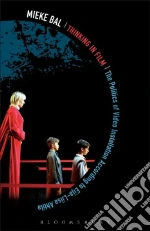 Title :
Thinking in Film
Title :
Thinking in FilmAuthor: Bal Mieke Publisher: Bloomsbury USA Academic What is a moving image, and how does it move us? In Thinking In Film, celebrated theorist Mieke Bal engages in an exploration - part dialogue, part voyage - with the video installations of Finnish artist Eija-Liisa Ahtila to understand movement as artistic practice and as affect. Through fifteen years of Ahtila's practice, including such seminal works as The Annunciation, Where Is Where? and The House, Bal searches for the places where theoretical and artistic practices intersect, to create radical spaces in which genuinely democratic acts are performed. Bringing together different understandings of 'figure' from form to character, Bal examines the syntax of the exhibition and its ability to bring together installations, the work itself, the physical and ontological thresholds of the installation space and the use of narrative and genre. The double meaning of 'movement', in Bal's unique thought, catalyses anunderstanding of video installation work as inherently plural, heterogenous and possessed of revolutionary political potential. The video image as an art form illuminates the question of what an image is, and the installation binds viewers to their own interactions with the space. In this context Bal argues that the intersection between movement and space creates an openness to difference and doubt. By 'thinking in' art, we find ideas not illustrated by but actualized in artworks. Bal practices this theory in action to demonstrate how the video installation can move us to think beyond ordinary boundaries and venture into new spaces. There is no act more radical than figuring a vision of the 'other' as film allows artto do. Thinking In Film is Mieke Bal ather incisive, innovative best as she opens up the miraculous political potential of the condensed art of the moving image. € 27,30
|
|
1911 |
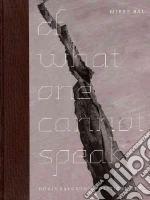 Title :
Of What One Cannot Speak
Title :
Of What One Cannot SpeakAuthor: Bal Mieke Publisher: Univ of Chicago Pr Doris Salcedo, a Colombian-born artist, addresses h the politics of memory and forgetting in work that embraces fraught situations in dangerous places. Noted critic and theorist Mieke Bal narrates between the disciplines of contemporary culture in order to boldly reimagine the role of the visual arts. Both women are pathbreaking figures, globally renowned and widely respected. Doris Salcedo, meet Mieke Bal. In Of What One Cannot Speak, Bal leads us into intimate encounters with Salcedo’s art, encouraging us to consider each work as a “theoretical object” that invites—and demands—certain kinds of considerations about history, death, erasure, and grief. Bal ranges widely through Salcedo’s work, from Salcedo’s Atrabiliarios series—in which the artist uses worn shoes to retrace los desaparecidos (“the disappeared”) from nations like Argentina, Chile, and Colombia—to Shibboleth, Salcedo’s once-in-a-lifetime commission by the Tate Modern, for which she created a rupture, as if by earthquake, that stretched the length of the museum hall’s concrete floor. In each instance, Salcedo’s installations speak for themselves, utilizing household items, human bones, and common domestic architecture to explore the silent spaces between violence, trauma, and identity. Yet Bal draws out even deeper responses to the work, questioning the nature of political art altogether and introducing concepts of metaphor, time, and space in order to contend with Salcedo’s powerful sculptures and installations. An unforgettable fusion of art and essay, Of What One Cannot Speak takes us to the very core of events we are capable of remembering—yet still uncomfortably cannot speak aloud.
€ 79,70
|
|
|
2009 |
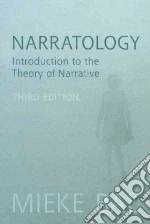 Title :
Narratology
Title :
NarratologyAuthor: Bal Mieke Publisher: Univ of Toronto Pr Since its first publication in English in 1985, Mieke Bal's Narratology has become the international classic and comprehensive introduction to the theory of narrative texts. Narratology is a systematic account of narrative techniques, methods, their transmission, and reception, in which Bal distills years of study of the ways in which we understand both literary and non-literary works. In this third edition, Bal updates the book to include more analysis of film narratives while also sharpening and tightening her language to make it the most readable and student-friendly edition to date. Bal also introduces new sections that treat and clarify several modernist texts that pose narratological challenges. With changes prompted by ten years of feedback from scholars and teachers, Narratology remains the most important contribution to the study of the way narratives work, are formed, and are received. € 29,40
|
|
|
2008 |
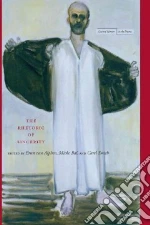 Title :
The Rhetoric of Sincerity
Title :
The Rhetoric of SincerityAuthor: Alphen Ernst Van (EDT), Bal Mieke (EDT), Smith Carel (EDT) Publisher: Stanford Univ Pr In times of intercultural tensions and conflicts, sincerity matters. Traditionally, sincerity concerns a performance of authenticity and truth, a performance that in intercultural situations is easily misunderstood. Sincerity plays a major role in law, the arts?literature, but especially the visual and performing arts?and religion. Sincerity enters the English language in the sixteenth century, when theatre emerged as the dominant idiom of secular representation, during a time of major religious changes. The present historical moment has much in common with that era; with its religious and cultural conflicts and major transformations in representational idioms and media. The Rhetoric of Sincerity is concerned with the ways in which the performance of sincerity is culturally specific and is enacted in different media and disciplines. The book focuses on the theatricality of sincerity, its bodily, linguistic, and social performances, and the success or failure of such performances. € 24,30
|
 Title :
Loving Yusuf
Title :
Loving YusufAuthor: Bal Mieke Publisher: Univ of Chicago Pr € 73,30
|
|
2006 |
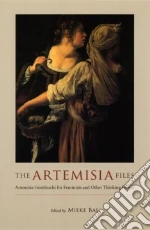 Title :
The Artemisia Files
Title :
The Artemisia FilesAuthor: Bal Mieke (EDT) Publisher: Univ of Chicago Pr One of the first female artists to achieve recognition in her own time, Artemisia Gentileschi (1593-1653) became instantly popular in the 1970s when feminist art historians 'discovered' her and argued vehemently for a place for her in the canon of Italian baroque painters. Featured alongside her father, Orazio Gentileschi, in a recent exhibition at the Metropolitan Museum of Art, Artemisia has continued to stir interest though her position in the canon remains precarious, in part because her sensationalized life history has overshadowed her art. In The Artemisia Files, Mieke Bal and her coauthors look squarely at this early icon of feminist art history and the question of her status as an artist. Considering the events that shaped her life and reputation—her relationship to her father and her role as the victim in a highly publicized rape case during which she was tortured into giving evidence—the authors make the case that Artemisia's importance is due to more than her role as a poster child in the feminist attack on traditional art history; here, Artemisia emerges more fully as a highly original artist whose work is greater than the sum of the events that have traditionally defined her. The fresh, engaging discourse in The Artemisia Files will help to both renew the reputation of this artist on the merit of her work and establish her rightful place in the history of art. “Over the last generation Artemisia has been transformed from a talented curiosity . . . into a standard bearer of early feminist consciousness. This book offers a fascinating glimpse into the critical frame of mind underlying this transformation.”—Keith Christiansen, Jayne Wrightsman Curator of Italian Painting, The Metropolitan Museum of Art € 29,80
|
 Title :
Reading Rembrandt
Title :
Reading RembrandtAuthor: Bal Mieke Publisher: Univ of Chicago Pr Reading Rembrandt questions the traditional boundaries between literary and visual analysis with close, side-by-side readings of some of the Dutch master's works alongside paintings of the same era whose attribution is still debated. A new understanding of the role of visuality in our culture emerges, one that makes significant inroads, most particularly, for the study of gender in Rembrandt's work. Demonstrating acute sensitivity to Rembrandt's art, acclaimed scholar and author Mieke Bal gives new depth to an old master, a perspective with vast consequences for our views of gender, the artist, and the act of reading. € 89,30
|
|
2005 |
 Title :
The Artemisia Files
Title :
The Artemisia FilesAuthor: Bal Mieke (EDT), Gentileschi Artemisia (EDT) Publisher: Univ of Chicago Pr One of the first female artists to achieve recognition in her own time, Artemisia Gentileschi (1593-1653) became instantly popular in the 1970s when feminist art historians 'discovered' her and argued vehemently for a place for her in the canon of Italian baroque painters. Featured alongside her father, Orazio Gentileschi, in a recent exhibition at the Metropolitan Museum of Art, Artemisia has continued to stir interest though her position in the canon remains precarious, in part because her sensationalized life history has overshadowed her art. In The Artemisia Files, Mieke Bal and her coauthors look squarely at this early icon of feminist art history and the question of her status as an artist. Considering the events that shaped her life and reputation—her relationship to her father and her role as the victim in a highly publicized rape case during which she was tortured into giving evidence—the authors make the case that Artemisia's importance is due to more than her role as a poster child in the feminist attack on traditional art history; here, Artemisia emerges more fully as a highly original artist whose work is greater than the sum of the events that have traditionally defined her. The fresh, engaging discourse in The Artemisia Files will help to both renew the reputation of this artist on the merit of her work and establish her rightful place in the history of art. “Over the last generation Artemisia has been transformed from a talented curiosity . . . into a standard bearer of early feminist consciousness. This book offers a fascinating glimpse into the critical frame of mind underlying this transformation.”—Keith Christiansen, Jayne Wrightsman Curator of Italian Painting, The Metropolitan Museum of Art € 45,10
|
|
|
2002 |
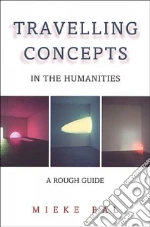 Title :
Travelling Concepts in the Humanities
Title :
Travelling Concepts in the HumanitiesAuthor: Bal Mieke Publisher: Univ of Toronto Pr Attempting to bridge the gap between specialised scholarship in the humanistic disciplines and an interdisciplinary project of cultural analysis, Mieke Bal has written an intellectual travel guide that charts the course 'beyond' cultural studies. As with any guide, it can be used in a number of ways and the reader can follow or willfully ignore any of the paths it maps or signposts. Bal's focus for this book is the idea that interdisciplinarity in the humanities - necessary, exciting, serious - must seek its heuristic and methodological basis in concepts rather than its methods. Concepts are not grids to put over an object. The counterpart of any given concept is the cultural text or work or 'thing' that constitutes the object of analysis. No concept is meaningful for cultural analysis unless it helps us to understand the object better on its own terms. Bal offers the reader a sustained theoretical reflection on how to 'do' cultural analysis through a tentative practice of doing just that. This offers a concrete practice to theoretical constructs, and allows the proposed method more accessibility. € 40,70
|
|
|
2001 |
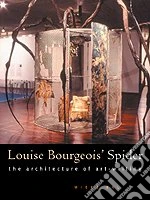 Title :
Louise Bourgeois' Spider
Title :
Louise Bourgeois' SpiderAuthor: Bal Mieke Publisher: Univ of Chicago Pr The sculptor Louise Bourgeois is best known for her monumental abstract sculptures, one of the most striking of which is the installation Spider (1997). Too vast in scale to be viewed all at once, this elusive structure resists simple narration. It fits both no genre and all of them--architecture, sculpture, installation. Its contents and associations evoke social issues without being reducible to any one of them. Here, literary critic and theorist Mieke Bal presents the work as a theoretical object, one that can teach us how to think, speak, and write about art. Known for her commentary on the issue of temporality in art, Bal argues that art must be understood in relationship to the present time of viewing as opposed to the less-immediate contexts of what has preceded the viewing, such as the historical past of influences and art movements, biography and interpretation. In ten short chapters, or 'takes,' Bal demonstrates that the closer the engagement with the work of art, the more adequate the result of the analysis. She also confronts issues of biography and autobiography--key themes in Bourgeois's work--and evaluates the consequences of 'ahistorical' experiences for art criticism, drawing on diverse sources such as Bernini and Benjamin, Homer and Eisenstein. This short, beautiful book offers both a theoretical model for analyzing art 'out of context' and a meditation on a key work by one of the most engaging artists of our era. € 48,90
|
|
|
1999 |
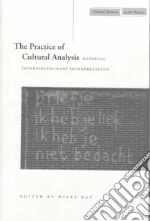 Title :
Practice of Cultural Analysis
Title :
Practice of Cultural AnalysisAuthor: Bal Mieke (EDT), Gonzales Bryan (EDT) Publisher: Stanford Univ Pr This volume presents an interdisciplinary approach to humanistic scholarship, one that can be situated somewhere between cultural studies and cultural history while being more specific than either. Cultural analysis as a critical practice is based on a keen awareness of the critic's situatedness in the present?the social and cultural present from which we look, and look back, at objects that are already of the past, objects that we take to define our present culture. Thus it can be summarized by the phrase ?cultural memory in the present.” Far from being indifferent to history, cultural analysis is devoted to understanding the past as part of the present, as what we have around us. The essays gathered here represent the current state of an emerging field of inquiry. At the same time, they suggest to the larger academic world what cultural analysis can and should do, or be, as an interdisciplinary practice. The challenge for this volume is to counter the common assumption that interdisciplinarity makes the object of inquiry vague and the methodology muddled. In meeting that challenge, it offers close textual and visual readings of subjects ranging from Vermeer to abstract expressionism, from the Book of Ruth to Djuna Barnes's Nightwood, from the history of cinema to popular culture in Zaire. The essays in Part I, ?Don't Look Now: Visual Memory in the Present,” explore in detailed case studies centered on the theme of visuality or looking, the tricky consequences of the uncertainties regarding history that the presentness of the past entails. Part II, ?Close-ups and Mirrors: The Return of Close Reading, with a Difference,” demonstrates and advocates ?listening” to the object without the New Critical naïveté that claims the text speaks for itself. Instead, the essays create the kind of dialogical situation that is a major characteristic of cultural analysis; the text does not speak for itself, but it does speak back. The essays in Part III, ?Method Matters: Reflections on the Identity of Cultural Analysis,” do not propose any ?directions for use” or authoritative statements on how to do cultural analysis. Arranged in pairs of opposites, the essays represent the kind of fruitful tension that stimulates debate. Though no definite answers are proposed, and conflicting views are left in conflict, the essays stimulate a (self-)reflection on cultural analysis, its practices, and its understandings. € 35,50
|
|
|
1998 |
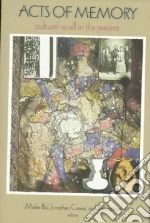 Title :
Acts of Memory
Title :
Acts of MemoryAuthor: Bal Mieke (EDT), Crewe Jonathan (EDT), Spitzer Leo (EDT) Publisher: Dartmouth College Acts of Memory presents 15 tightly integrated essays that illustrate the active role of individual and cultural memory in tying the past to the present. Memory, or memorialization, is a cultural activity occurring in the present that offers history another kind of source or document; one that provides insights into the past as it lives on today. The authors, in fields ranging from philosophy and history through literature and media studies, illustrate how memory serves many purposes, between conscious recall and unreflected re-emergence, between nostalgic longing for what is lost to polemical use of the past to reshape the present. Their essays coalesce around three topics: the need for memory and testimonial facilitation of memory, primarily in the case of historical and individual trauma; the site-specific nature of acts of memory, especially in geopolitically conflicted situations; and the potential contributions of acts of memory when facing the difficulties and needs of the present. 'Neither remnant, document, nor relic of the past, nor floating in a present cut off from the past, cultural memory, for better or worse, binds the past to the present and future. It is that process of binding that we explore in this volume' writes Mieke Bal. CONTRIBUTORS: Carol B. Bardenstein, Susan J. Brison, Ann Burlein, Katharine Conley, Lessie Jo Frazier, Gerd Gemuenden, Marianne Hirsch, Andreas Huyssen, Irene Kacandes, Mary Kelley, Marita Sturken, Ernst van Alphen, and the editors € 31,90
|
|
|
Data Pubblicazione 'Non disponibile' |
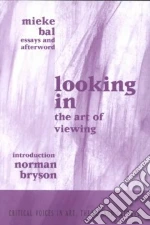 Title :
Looking in
Title :
Looking inAuthor: Bal Mieke, Bryson Norman Publisher: Routledge First published in 2001. Routledge is an imprint of Taylor & Francis, an informa company. € 43,90
|
|